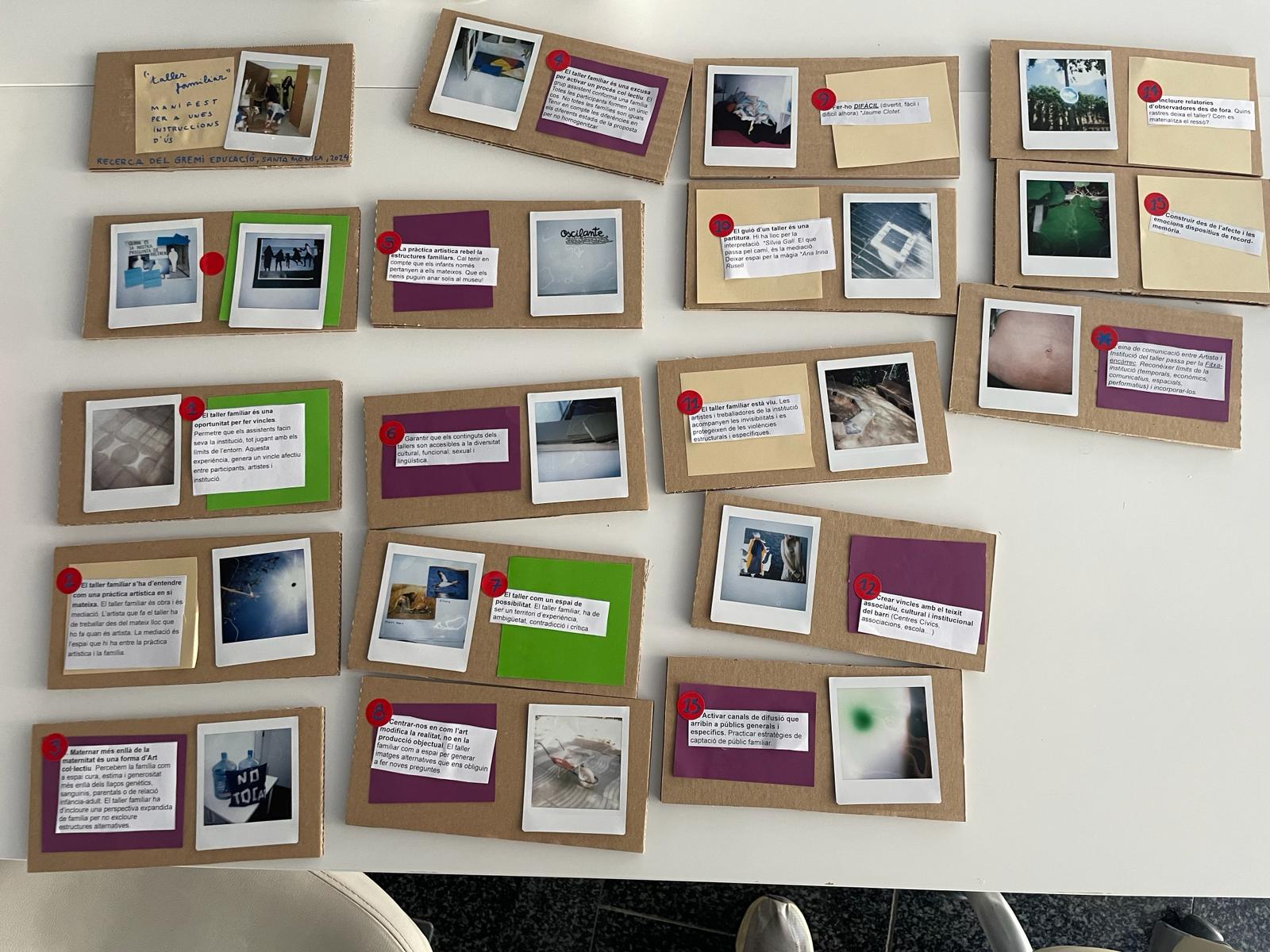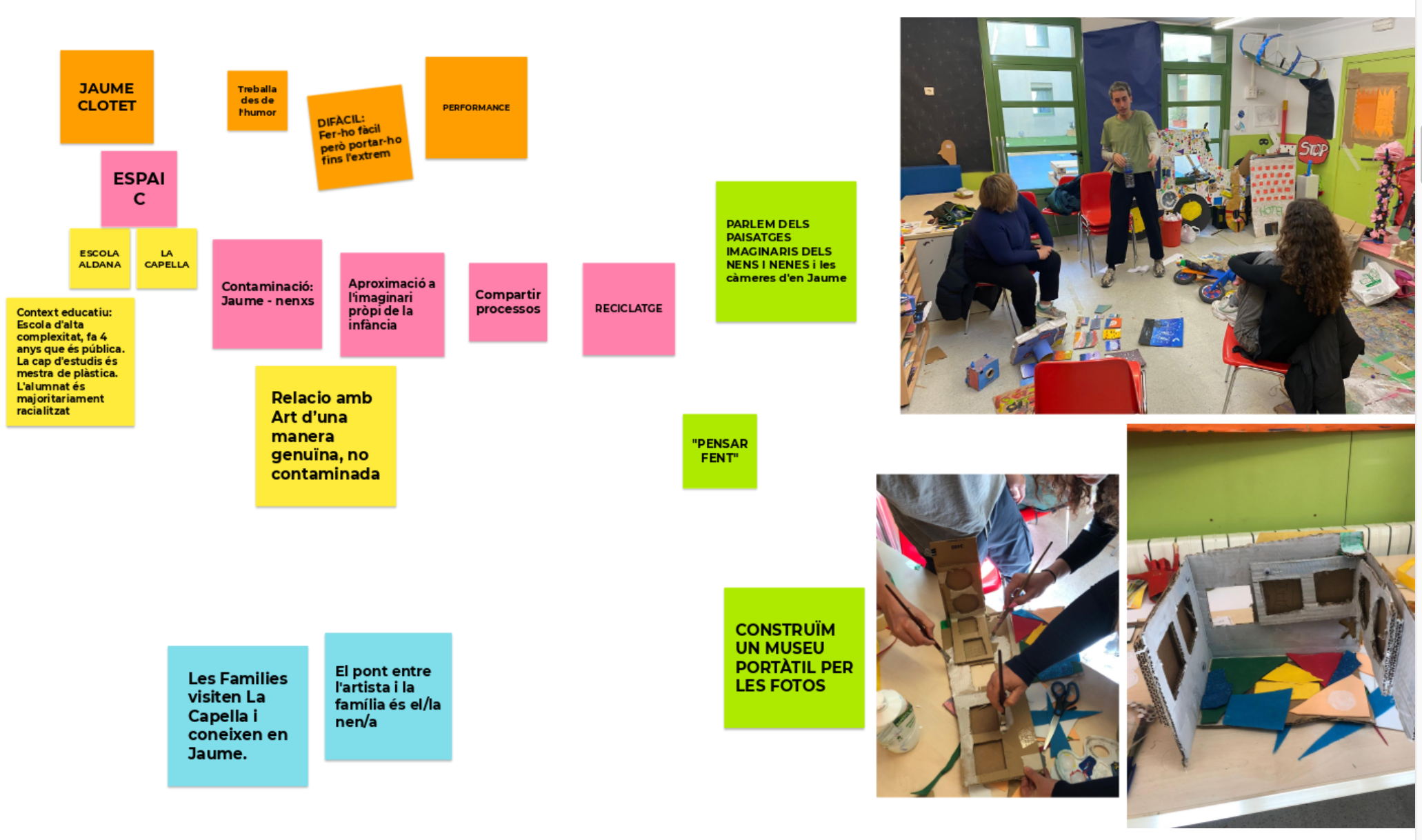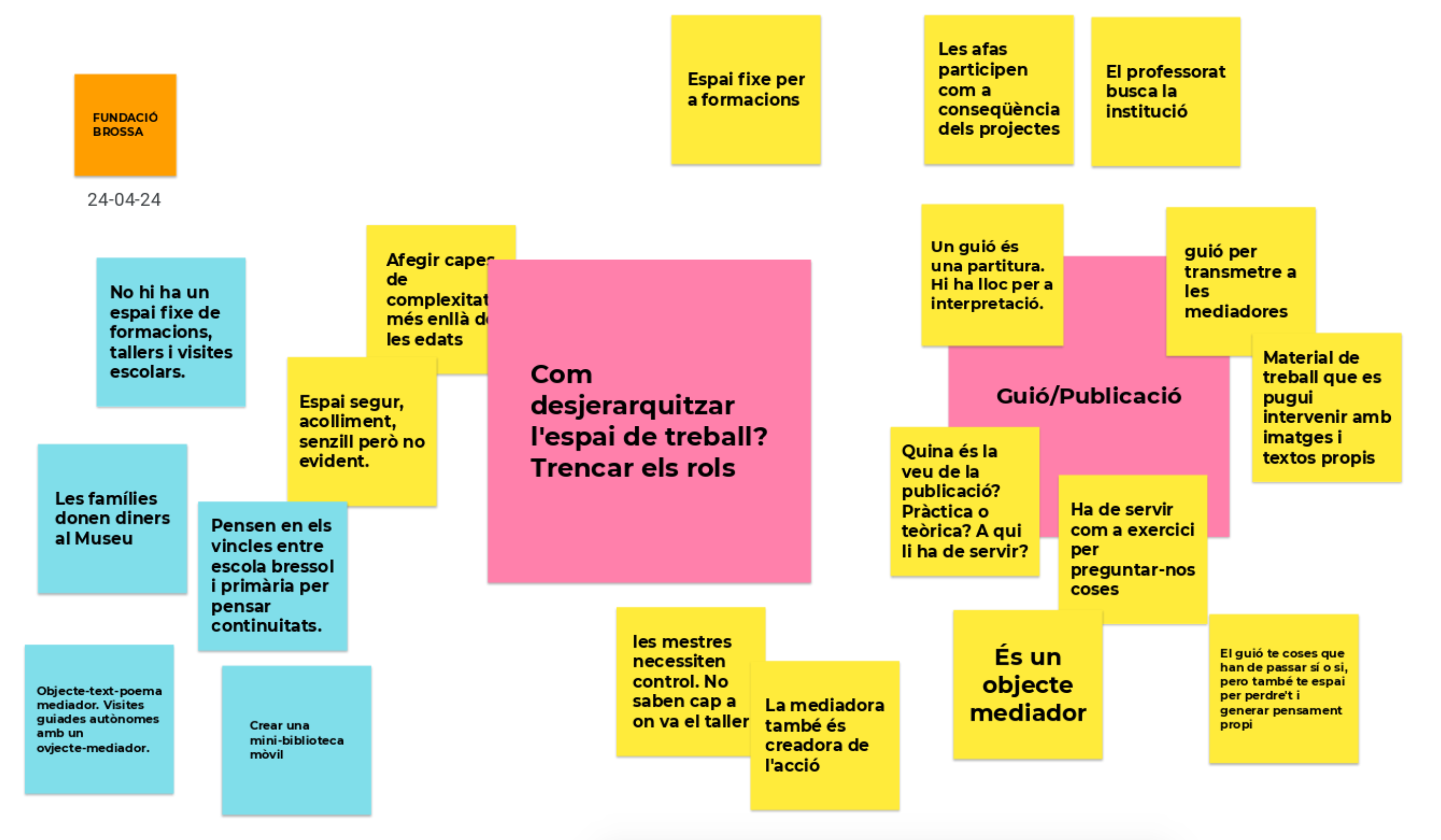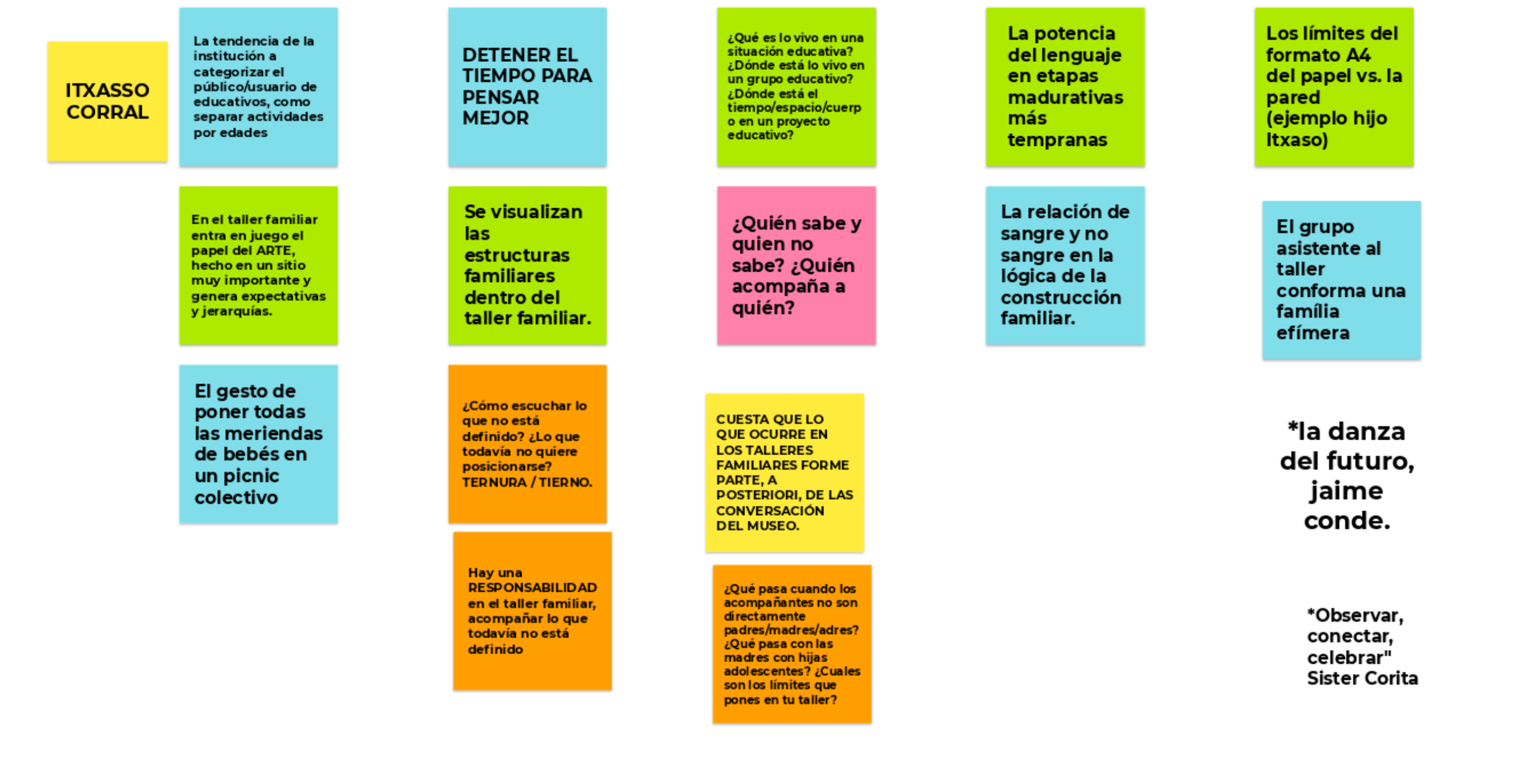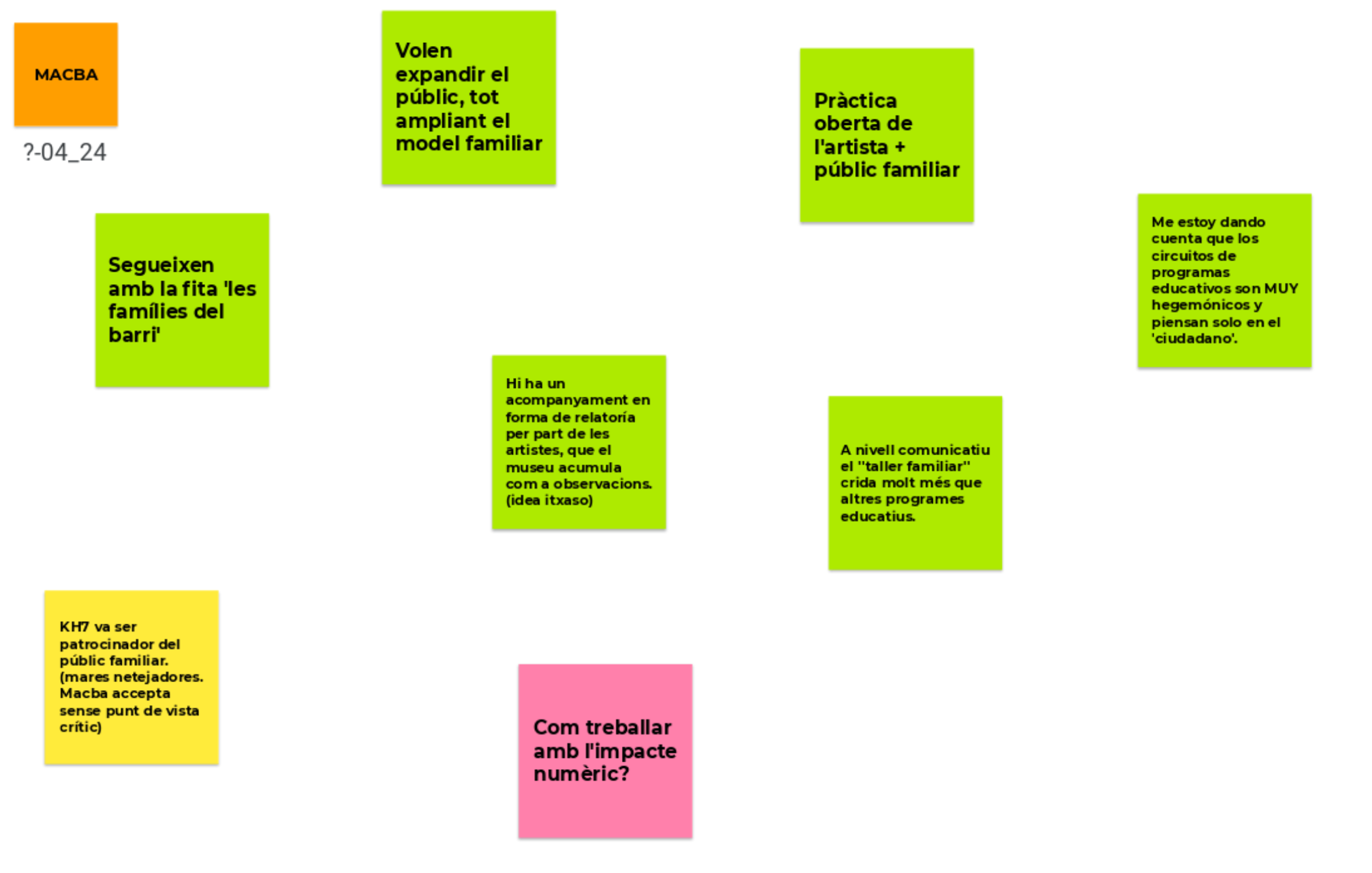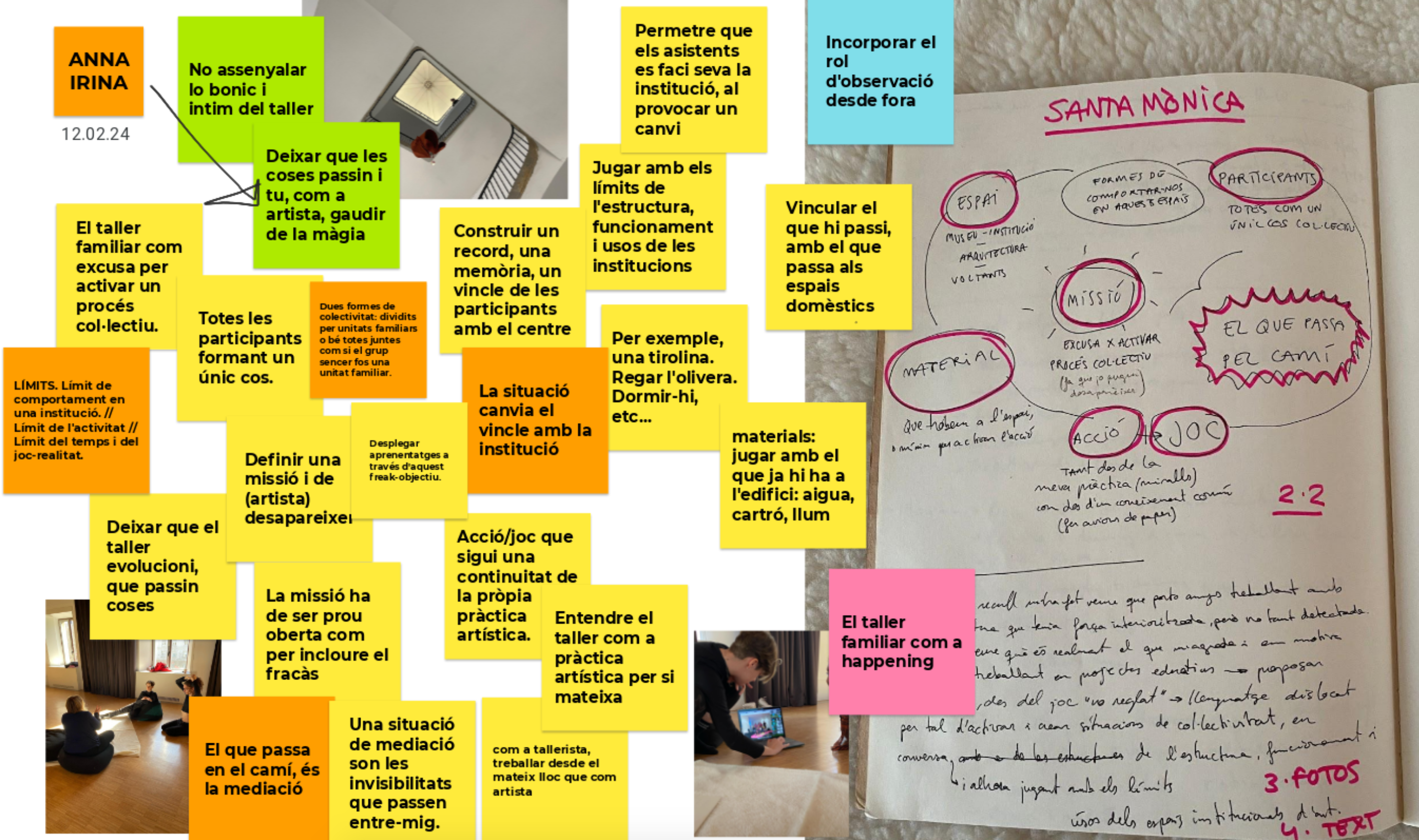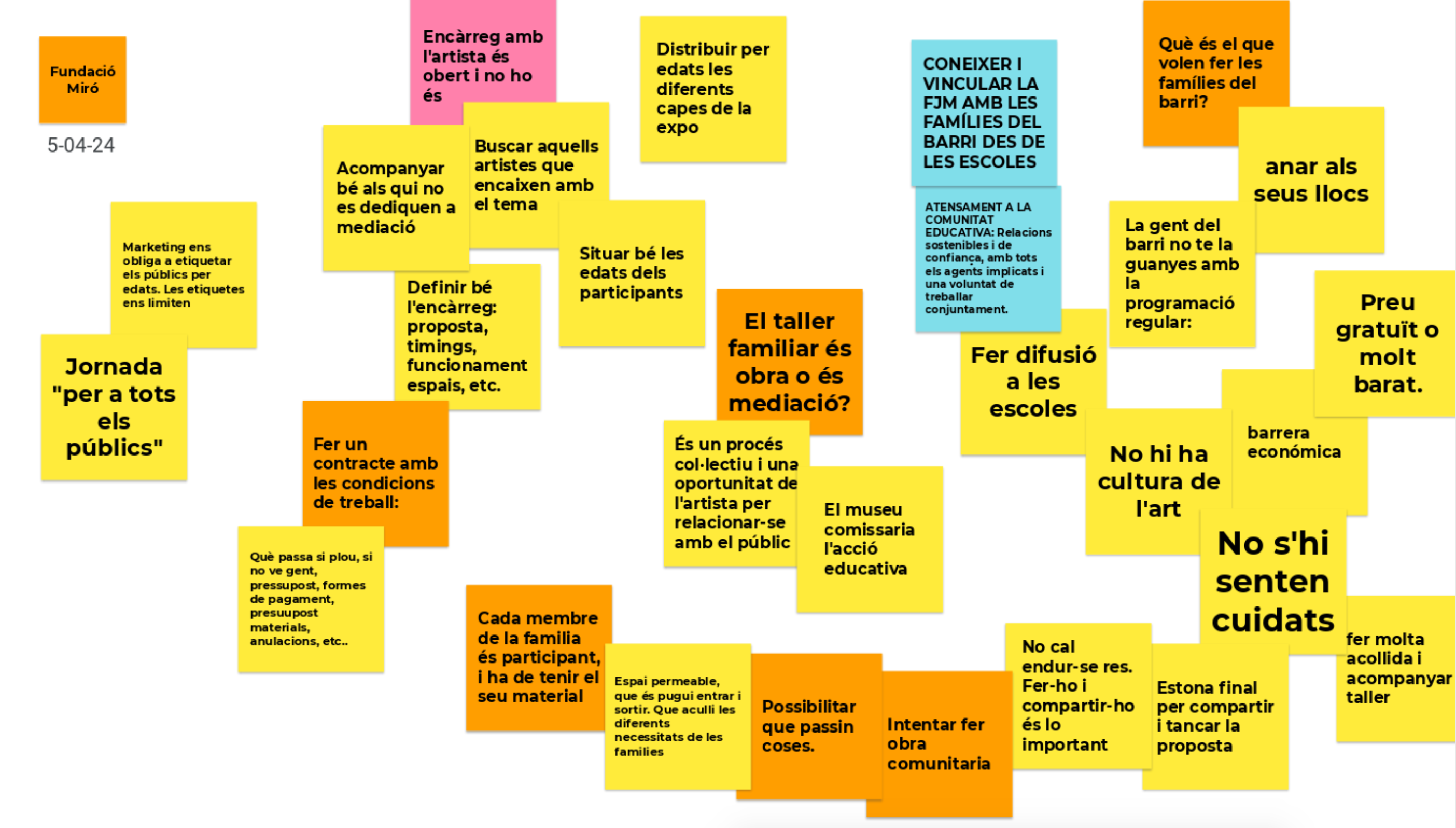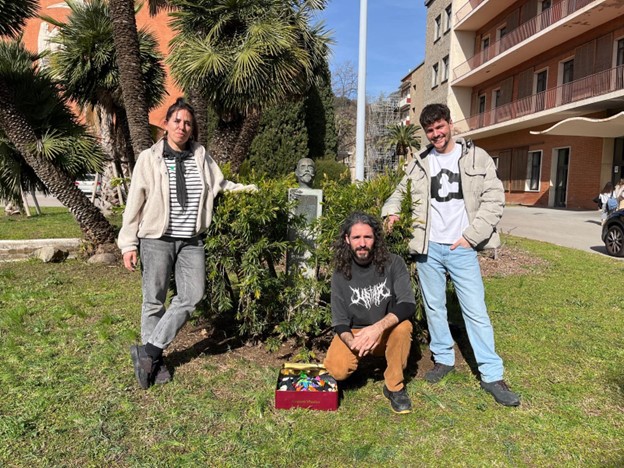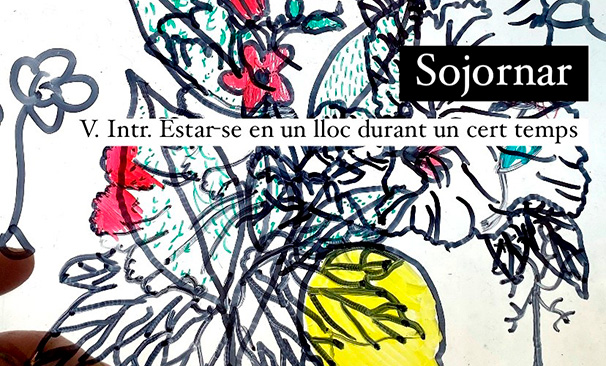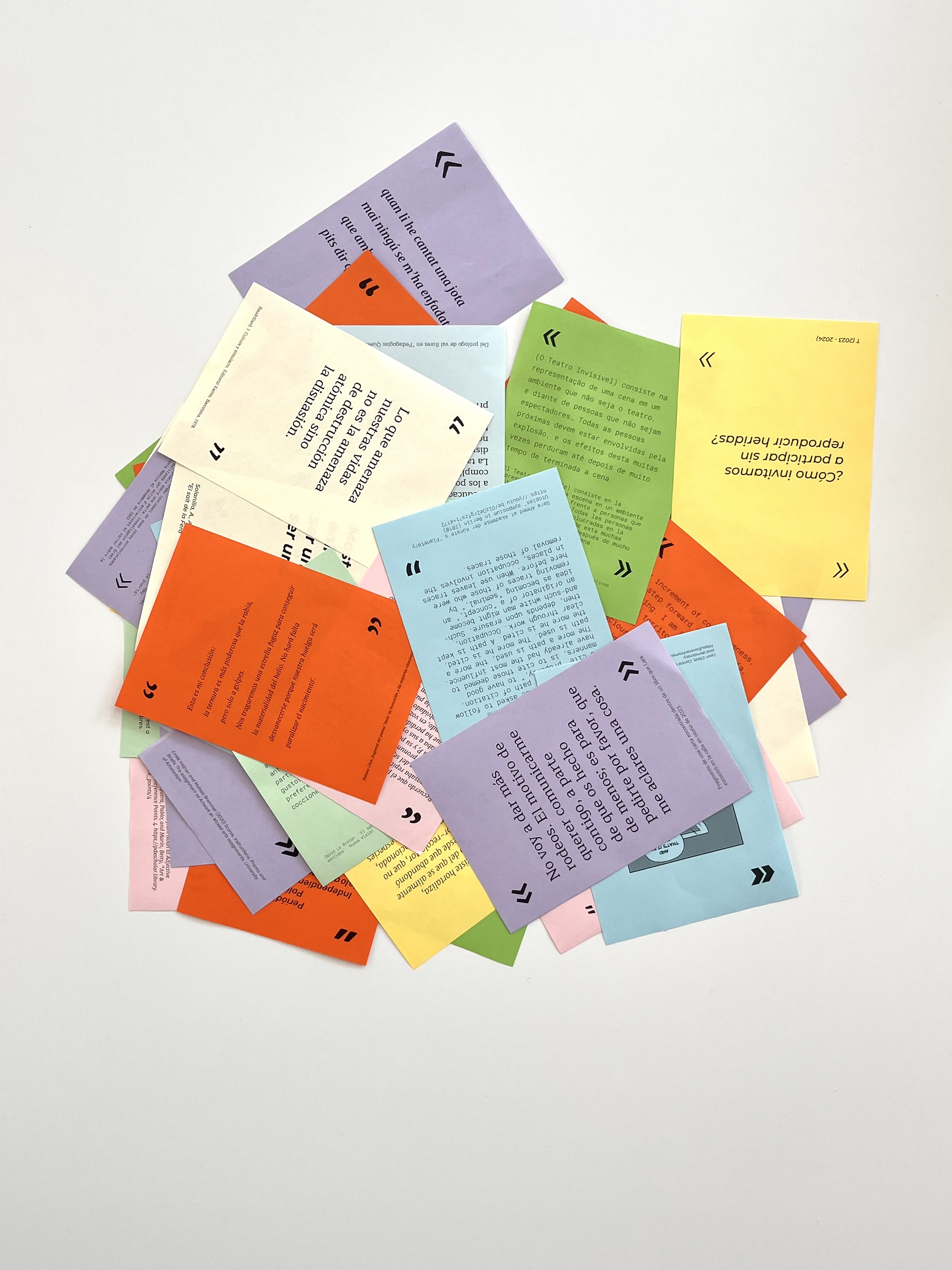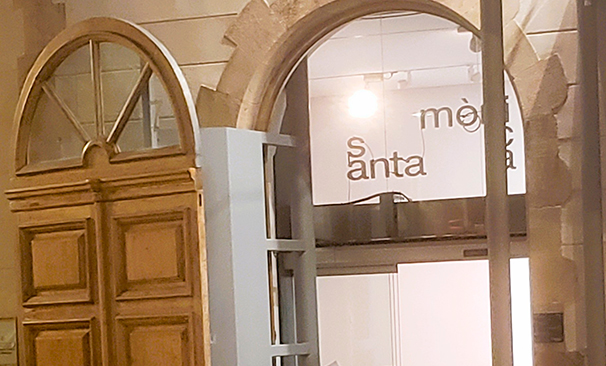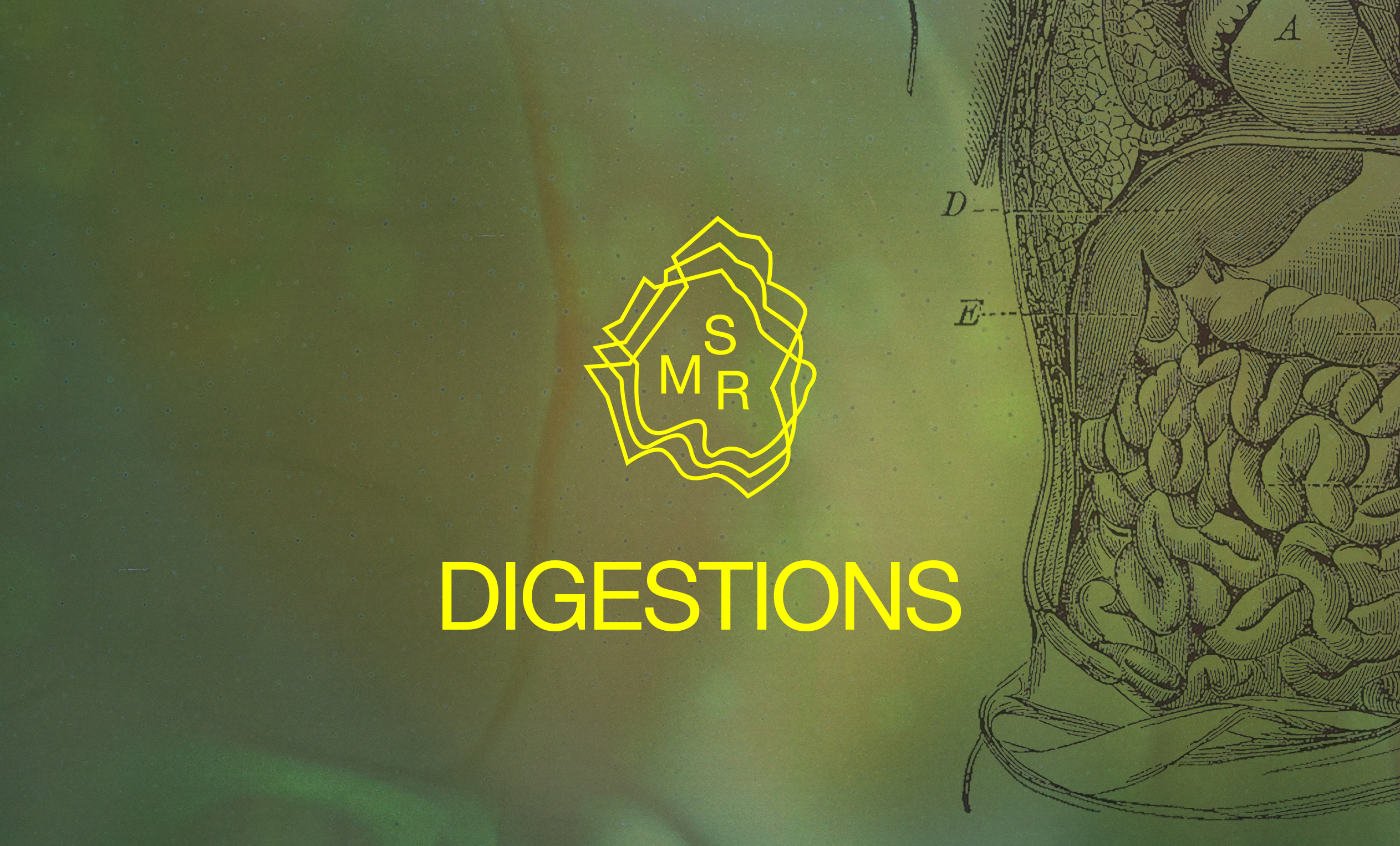What are you looking for?
You might be looking for...
Manifest dels Tallers Familiars
A game for rethinking mediation formats for family building
Abstract
This prototype is a manifesto in the form of a game that questions and reformulates outdated ideas around two concepts: the family and the workshop as a mediation format. Aimed at artists and cultural facilities, it aims to generate critical reflection on how to approach the family within the art institution.
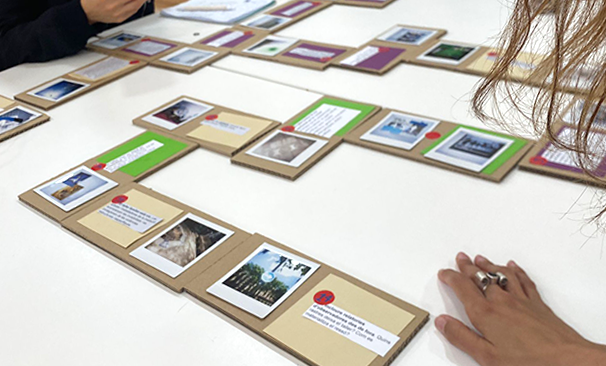
In the world of cultural production, the manifesto is a sufficiently recognised format for making the position of a group of people known with respect to a theme, as far back as the avant-garde of the 19th and 20th centuries. Meanwhile, the family workshop is a star tool in education departments, which is often repeated without much room for reflection.
This prototype, therefore, uses both formats and brings them together in a game: a tool that helps institutions to keep families in mind, to reflect on their role and to make them more present in the cultural life of the city.
BACKGROUND
- A group of people from the cultural sector interested in family mediation formats. A group of 6 to 10 people is recommended.
- At least two hours to develop the dynamics. The dynamic is designed to last around two hours, but we recommend that you also dedicate some time beforehand to facilitating interaction among the participants, so that they can introduce themselves and have a drink or snack relaxedly.
- A quiet, well-lit space with a large table in the centre and chairs arranged around it.
INGREDIENTS
1. Choose one or more people to be the facilitator(s) of the exercise. These people will be in charge of taking note of any reflections that can enhance the research and be used to modify the manifesto, if necessary.
2. Hand out the manifesto cards to the participants. Each person must have at least one card. Some people may have two.
3. The person who has the card with the double image starts the game and the rest follow when they feel that the text on their card is what carries on from the previous card.
4. Taking turns at random, each person will read out their card and place it on the table like in dominoes: linking it to the cards already on display. The cards can be linked by the part with text or by the message conveyed by the images. It is important that the person taking the turn is given time to express why they are linking these two cards, and to share related personal or work experiences with the group when placing the card.
5. When the person finishes their turn, the rest of the group can have the floor to add further reflections on the point in question. When there are no more contributions, the turn is passed on.
STEPS
When reading, considering and applying this manifesto, we recommend not to take it literally, or not to do so without a critical perspective. It should always be reviewed before implementation to ensure that it is appropriate and foresees the particularities of the cultural and territorial context in which it is to be used.
Should you want to create a prototype like this one, we invite you to consult the full report.
RECOMMENDATIONS AND ADVICE
Materialisations
Education Guild Prototype 23-24
Rosa Llop, Martí de la Malla and Sara Manubens
Participants:
Jaume Clotet, Itxaso Corral, Aimar Pérez Galí, Anna Irina Russell, Mercè Jarque and Noemí Tomás (Fundació Joan Miró), Silvia Galí (Fundació Joan Brossa), Yolanda Jolis, Ricardo Pérez-Hita and Isaac Sanjuan (MACBA).
Acknowledgements:
Fourth-year primary school students from Escola Drassanes (in the framework of Sojornar 2024 at the Santa Mònica), participants of the fourth edition of the Santa Mònica programme (creating) Situations, Mayte Luque (Centre Cívic Drassanes), Anna Gnagui Irigoyen and Júlia Beltran (Filmoteca), Maria Farràs (CCCB) and Daniel Gasol (La Capella).
PROTOTYPE CREDITS 23-24
* This recipe is based on documentation of the entire process. For more details, contact us at santamonica@gencat.cat.
